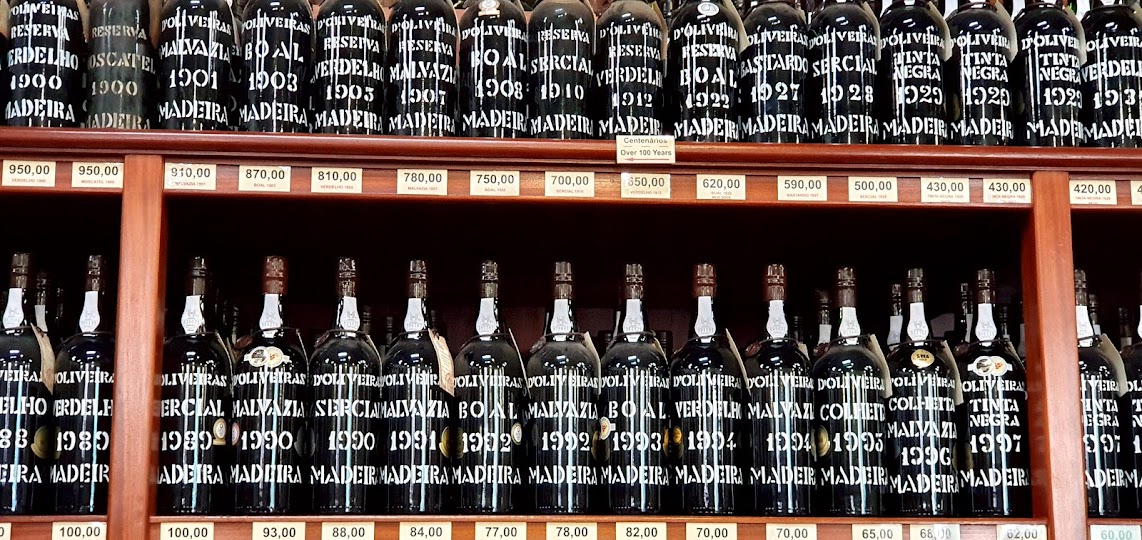Tuesday, April 30, 2024
Wines from Sardinia, with Peter McCombie, MW
Wednesday, April 24, 2024
Vernatsch of South Tyrol / Alto Adige
 |
| Walter Speller introduces vernatsch from Alto Adige/South Tyrol, Italy |
Tuesday, April 23, 2024
Moscatel de Setubal with Sarah Ahmed
You think of Portuguese fortified wines and immediately port comes to mind. If you are a lover or fortified then you will probably know madeira wine with its magic heating process. No one I ever met, even among sommeliers, including myself!, ever mentioned Moscatel de Setúbal.
A masterclass by Sarah Ahmed, The Wine Detective, organized by The Big Fortified Tasting plugged this unjustified hole in my knowledge base and I hope it will do the same for my readers. This is some of the main takeaways from her talk.
More info on the Setúbal Peninsula wines website.
 |
| Image courtesy of Setúbal peninsula Wines |
 |
| Image courtesy of Setúbal peninsula Wines |
The area is of course by the sea and enjoys a maritime climate. Vines are often planted facing north up to several hundred meters of altitude to moderate exposure to heat and preserve freshness. There is also a planting area at 50-80 meters and it is mostly flat, and this produces richer wines. Soil is mostly clay and limestone.
Total area planted for Moscatel de Setúbal is 634 hectares and 62 additional hectares for roxo.
Denomination of Origin established as far back as 1908 for Moscatel de Setúbal (1989 for Pamela). Wines must be made with at least 85% Moscatel de Setúbal grapes or the red variant Roxo. Moscatel de Setúbal is known as Muscat of Alexandria, or Zibibbo in southern Italy and specifically in Pantelleria.
The grapes are destemmed before being crushed, then left to ferment with the skins. Fermentation is stopped with fortification and maceration continues for over three months. Skins are pressed for further extraction and aging is at least 18 months in steel (resulting in a "young" fresher wine, up to 5 years of aging) or oak barrels (resulting in a "classic" velvety and nutty wine, 5+ years of aging).
Vintage wines must hold at least 85% of the same year in the bottle and Reserva is given by a tasting panel without any additional aging, while Superior requires 5 more years.
 |
| Sarah Ahmed |
1. Adega de Palmela 2021
Port in the 21st Century with the School of Port
Saturday, April 20, 2024
Meet the producer: Alcardet, Toledo, Spain
A fruity, balanced wine with medium body. Smooth tannins. Ready now. I paired with pasta that I had prepared with a sweet tendency sauce. I also tried roasted chicken and peas, and would not recommend a steak as red meat would have too much structure for this delicate wine.
Friday, April 12, 2024
Trade tasting of Monastrell wines from Spain
 |
| Thank you Peter McCombie MW |
 |
| Ready, set, go Monastrell! |
Tuesday, April 9, 2024
Mountainous Macedonia, Epirus and Central Greece
Insightful masterclass delivered by Sofia Perpera for Westbury Communication. This has become a notable and pleasant tradition on the London wine scene. Here below are my main takeaway points.
Greece also developed the first kind of "controlled denomination of origin" by legislating that producers had to use different kinds of amphoras depending on the type of wine. Heavy fines were imposed on rule breakers!
I mentioned there were older wines around the world (Georgia, Mesopotamia) but perhaps the oldest in Europe was indeed Greek, and the oldest known press is to be found near Knossos, on the island of Crete.
The Greeks drank their wine diluted in water, a habit that the Romans would later copy just like they copied (and often improved) on so much of Greek culture. Three parts of water to one part of wine was the accepted ratio, probably because it would make the wine more drinkable and hide its inevitable faults. (The Romans were known to mix wine and water also for the opposite reason: to allow alcohol to at least partially disinfect drinking water.)
Wine continued to develop in Greece long after the classic period but it suffered during the many centuries of Turkish occupation as it was perceived contrary to the precepts of islam.
One had to wait until the 1990s to finally see a revival of quality production. Greek winemakers went abroad to study, mainly in France but also in italy and the US, and vineyards invested in state of the art technology. A school of oenology has been active in Athens wince 1980.
Membership in the EU after 1981 also helped a lot, with the Common Agricultural Policy providing much needed funding to increase investment and the EU authorities regulating production to improve quality.
Today, some 65,000 hectares of land are planted with vines (though the exact number is now known, the cadastre is less than totally accurate) and this still not much, less than 2% of vines in the EU as a whole. Two thirds are devoted to produce white wine and one third red.
Germany and the USA are the main export markets.
The great news of recent years is that, while at the beginning of the quality revival in the 1990s producers preferred international grapes, mostly from France, now they devote special attention to plant local varieties, at least where this can be made to optimize quality.
Tasting notes:
1. Jima Winery, Super Girl 2022



















